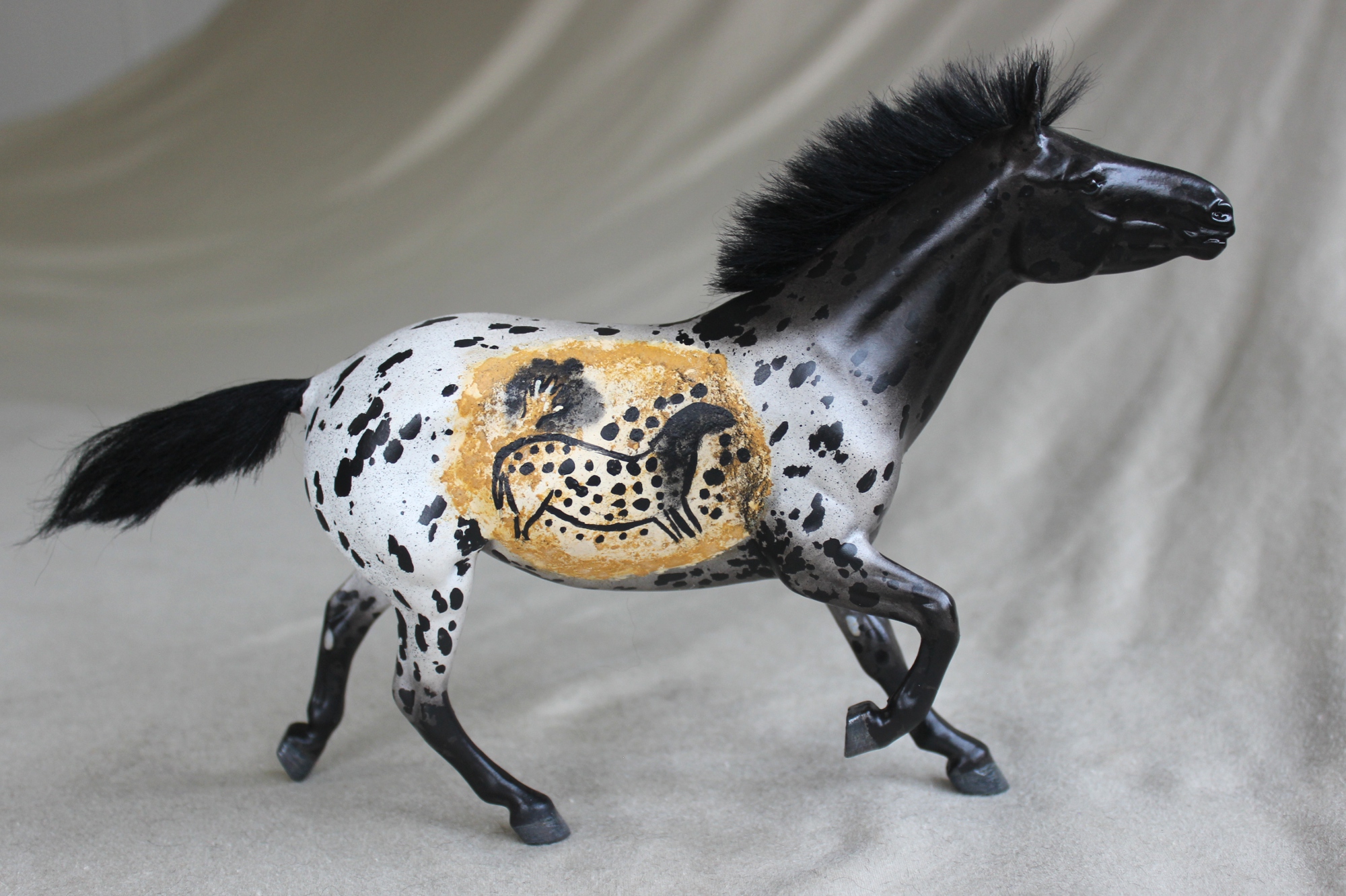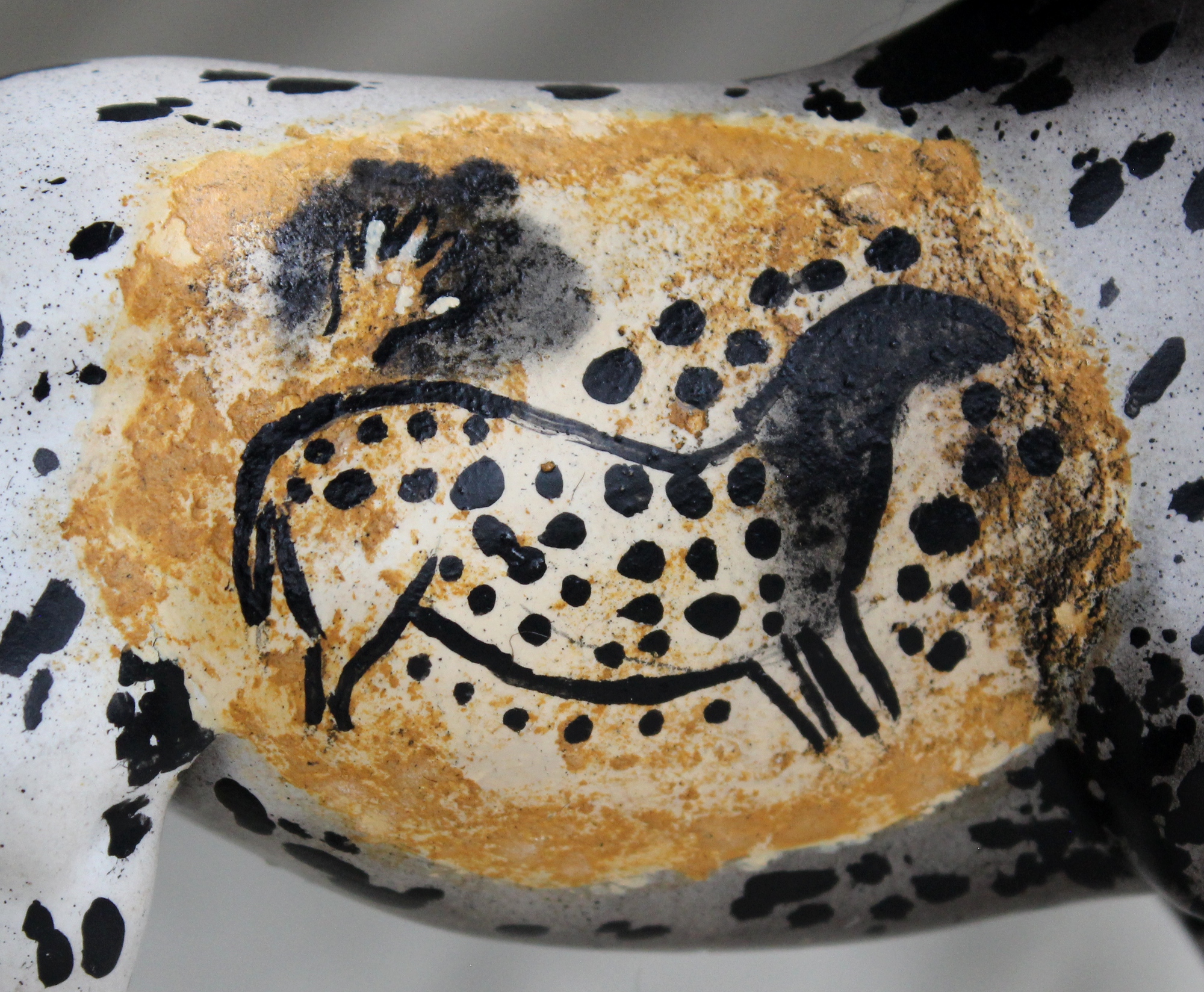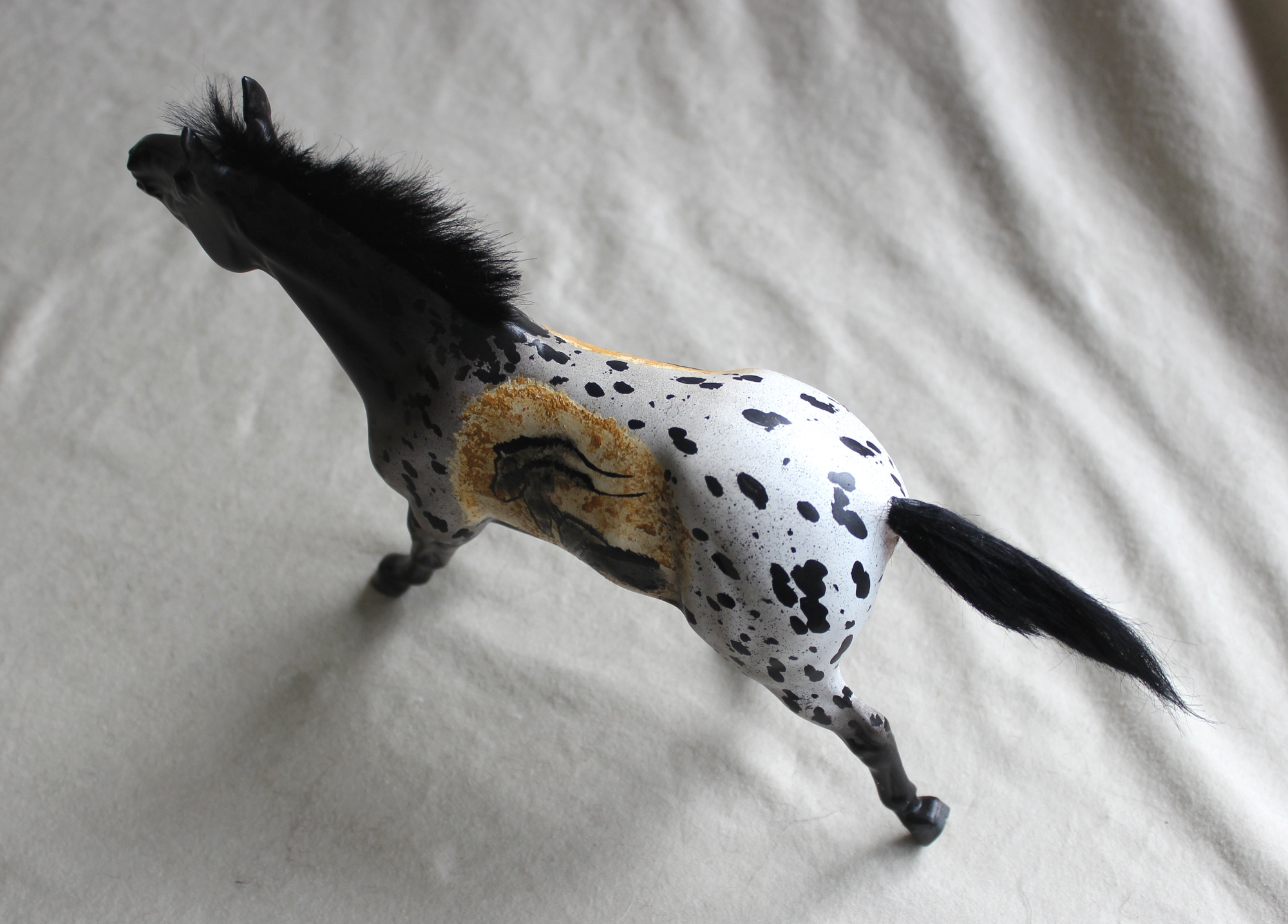Last but not least is the wild horse (Equus ferus ferus). Unlike mustangs and brumbies, which are feral domesticated horses, truly wild horses were populations of Equus ferus that were never tamed, unlike their domesticated counterparts. The last likely wild horse, known as the tarpan, went extinct barely 100 years ago, with the last known individual dying in a zoo in 1909. (It is debatable whether tarpans were pure wild horses, or whether they had hybridized with domestic ones.)
Horses featured prominently in many European cave paintings, and these inspired Breyer’s special run model Caves of Lascaux. Created on the zebra mold in 2015 and limited to 650 pieces, this model used Przewalski horse-like coloration which was also common in cave paintings, and the cave paintings were applied with stickers rather than hand painting. It was this model (which I have yet to add to my own collection) that inspired me to create this series in the first place. While it’s a lovely piece of art, I acknowledged its limitations due to being a mass produced piece on a mold of another species, and wanted to try my own take on a one of a kind piece.
I started by removing the mane, tail, and ears of the zebra model, and completely sculpting new, more horse-like ears as well as a tailbone and mare parts. I chose to paint her in black appaloosa after the cave paintings at Pech Merle; genetic research has shown that contemporary horses did have the genes for spotting. Her sides feature reproductions of cave paintings from Pech Merle (right) and Chauvet (left), and her tail and rooted, standing mane are made with mohair. Many thanks to the Breeding Back blog for some really good reading material and resources for researching the phenotypical details of this species.
Measurements: 11″ x 6 1/2″ 2 1/4″












